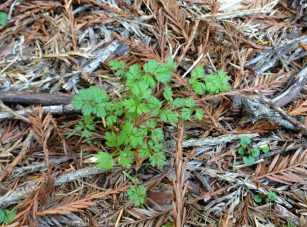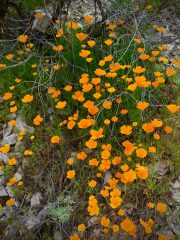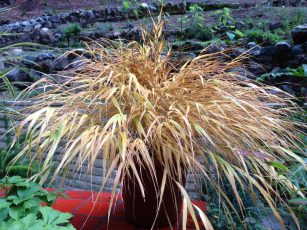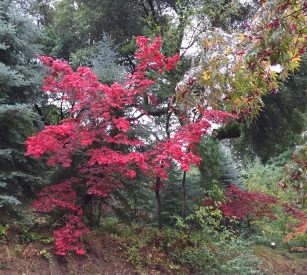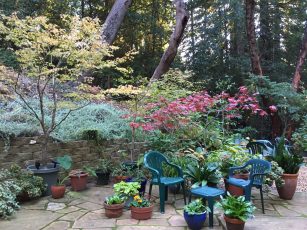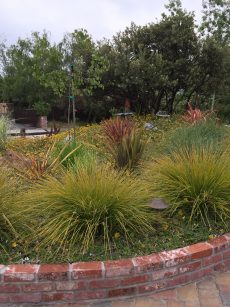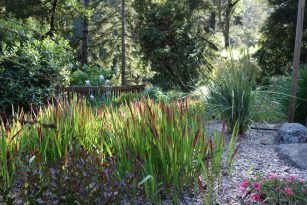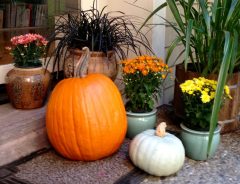 A Thanksgiving Poem? by Jan Nelson,? The Mountain Gardener
A Thanksgiving Poem? by Jan Nelson,? The Mountain Gardener
Once upon a time when our area was under the sea
there were no parks or trails or trees or gardens.
I’m thankful that our mountains rose from an ancient ocean
and we can now enjoy this beautiful place we call home.
I’m thankful for the bigleaf maples with leaves as big as saucers
and for the giant redwoods that sprouted long ago
and the five-fingered ferns that grow lush
along Fall Creek on the way to the old lime kilns.
I’m thankful for the pond and western turtles who live at Quail Hollow
and for the unique sandhills, grasslands and redwoods
and for the western bluebirds and other creatures that call it home.
I’m thankful for the dog park and soccer field at Skypark
where little kids and dogs both big and small have a place of their own
and for the picnic area and Fourth of July fireworks,
and the Art and Wine festival and Music in the Park on summer nights.
I?m thankful also for all our parks from Garrahan, Junction, Highlands,
Fall Creek, Henry Cowell and Felton Covered Bridge in San Lorenzo Valley,
to Lodato, Siltanen and MacDorsa parks in Scotts Valley.
Each place is unique and is each one of us.
I’m thankful for Bonny Doon where I can see both sides of Ben Lomond Mountain
and for the Ecological Reserve with its fossilized marine animals and sharks teeth
that are exposed in the mountain made of sand.
I’m thankful for California’s oldest state park. Big Basin, with its waterfalls and lush canyons
and slopes covered with redwoods sorrel, violets, fragrant azaleas and mountain iris
and for the banana slugs, marbled murrelets and red-legged frogs who make it their home.
I’m thankful for the whisper of the wind blowing across the water at Loch Lomond
and for the gentle whir of fishing reels along the bank,
thick with tan oaks, redwoods and madrone.
And finally, I’m thankful for friends, family and neighbors
who share the knowledge that in nature life continues.
Look around you and be thankful for the bounty, the restfulness,
and take time to enjoy these beautiful mountains that we call home.
I wish you all a Happy Thanksgiving.

